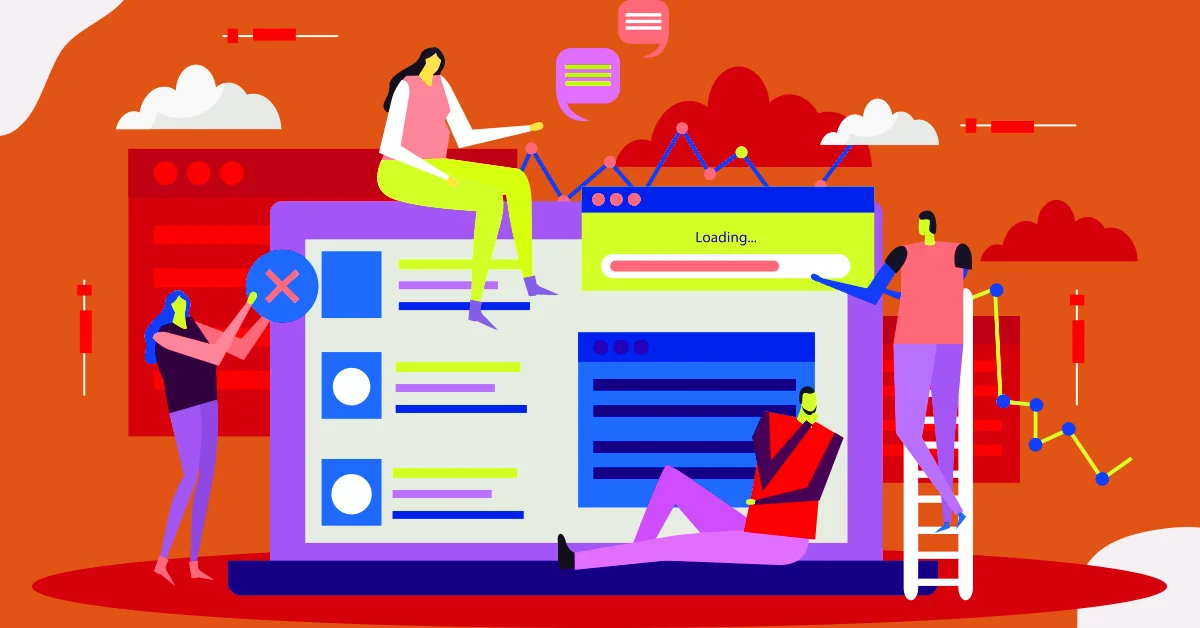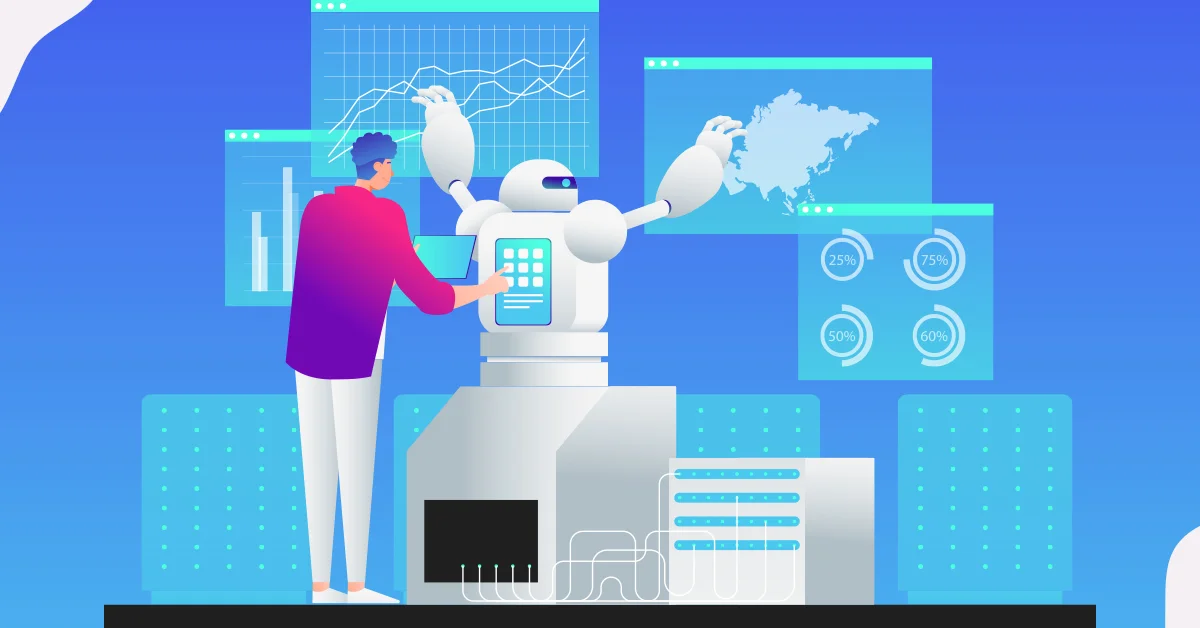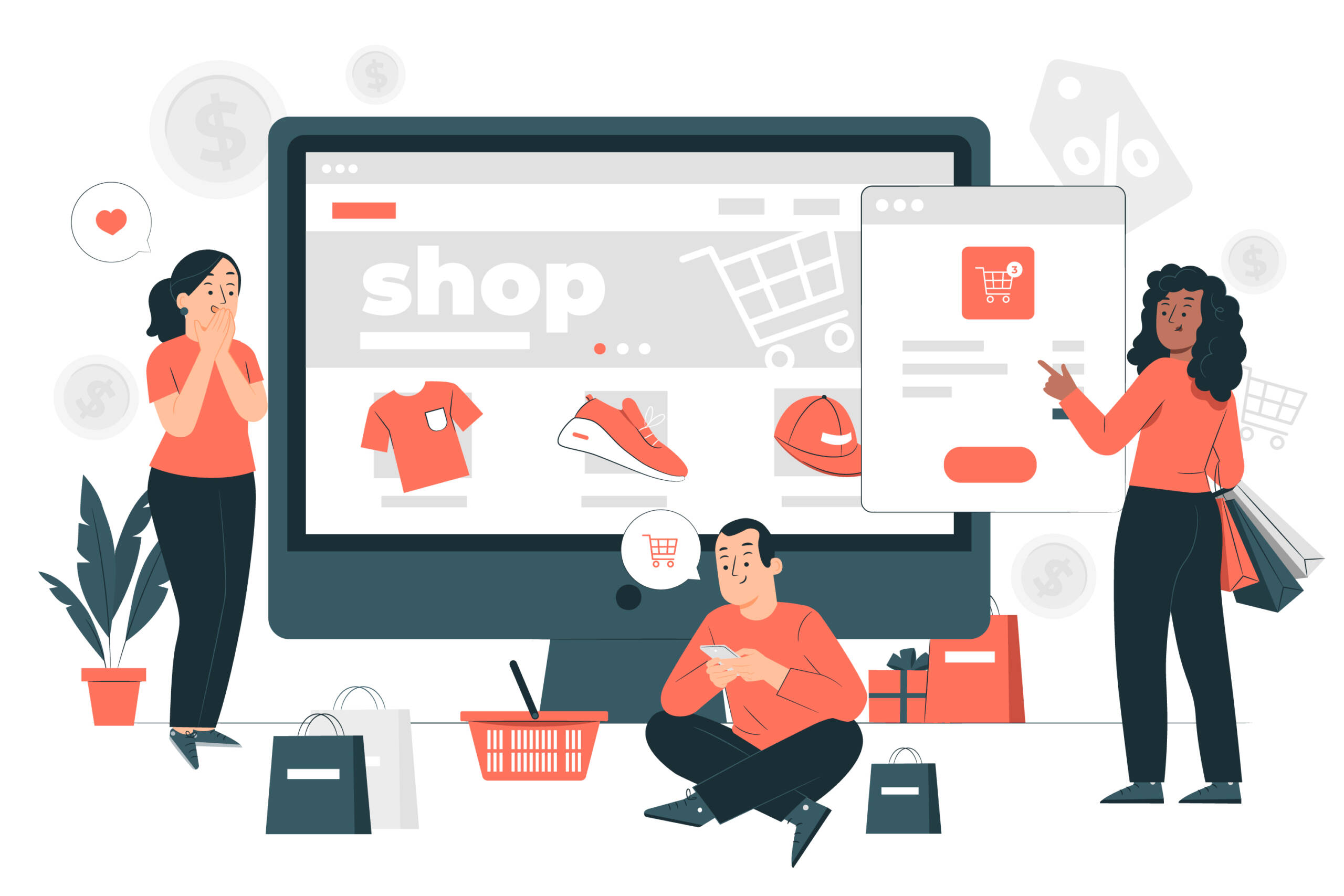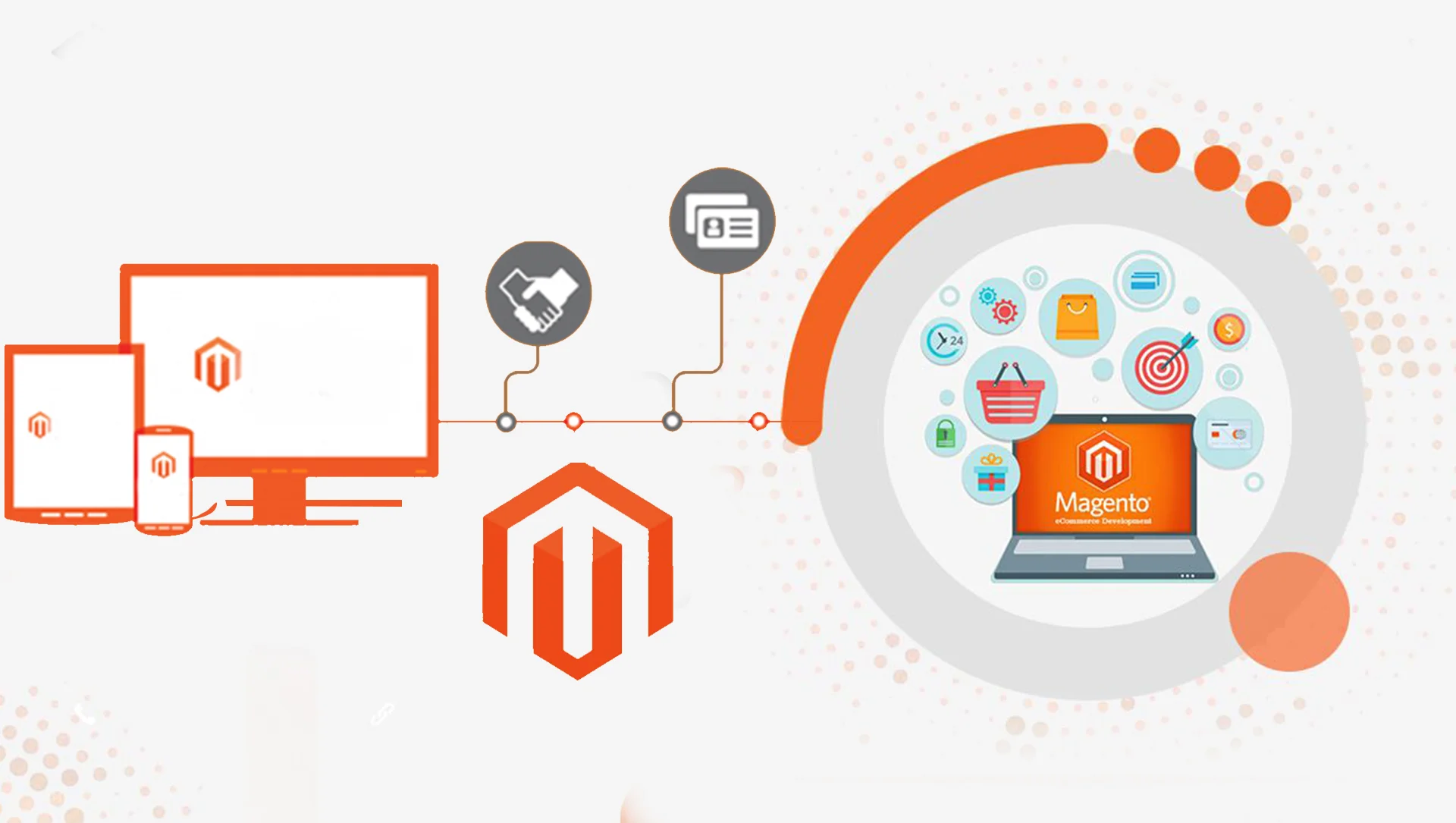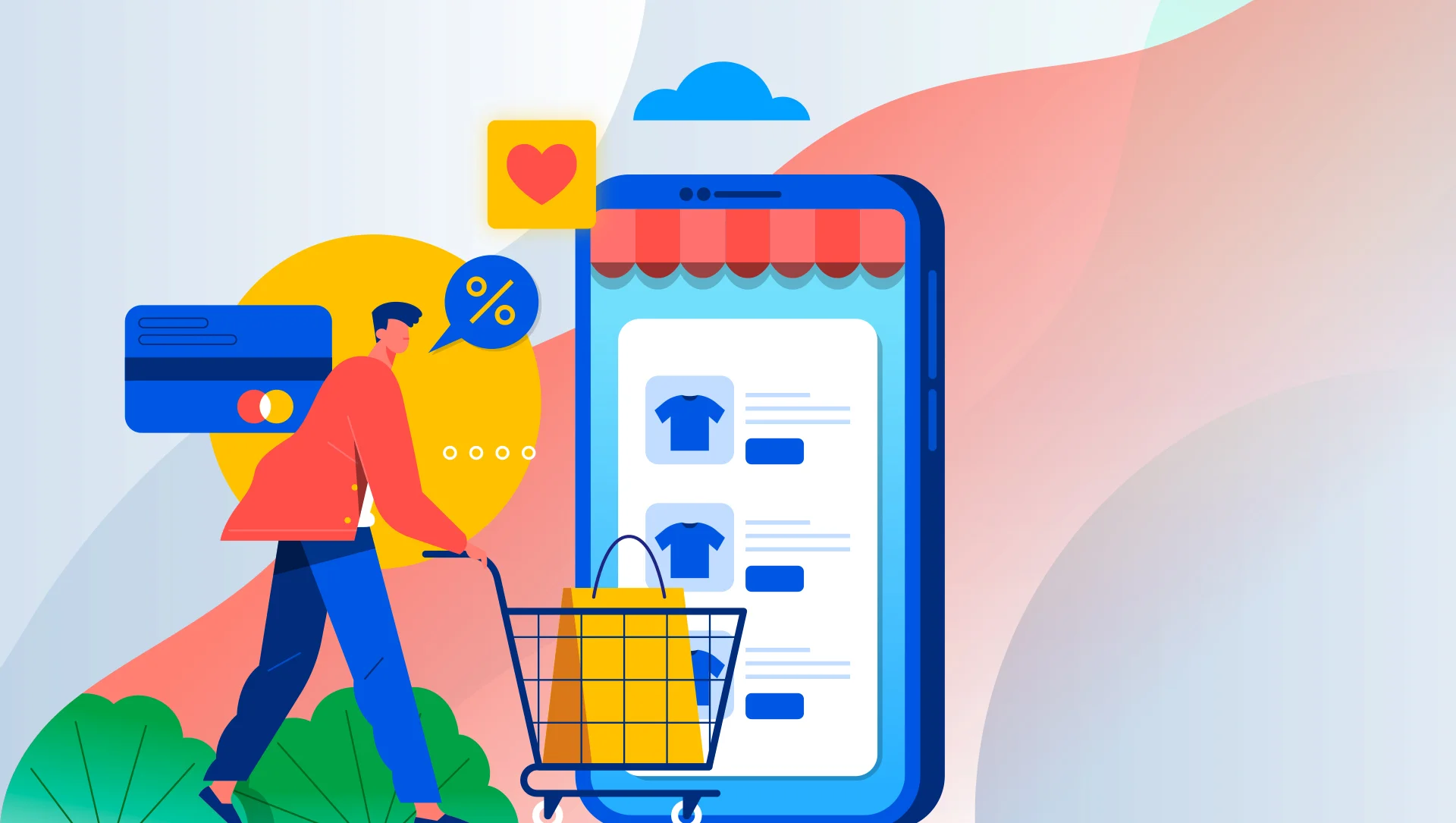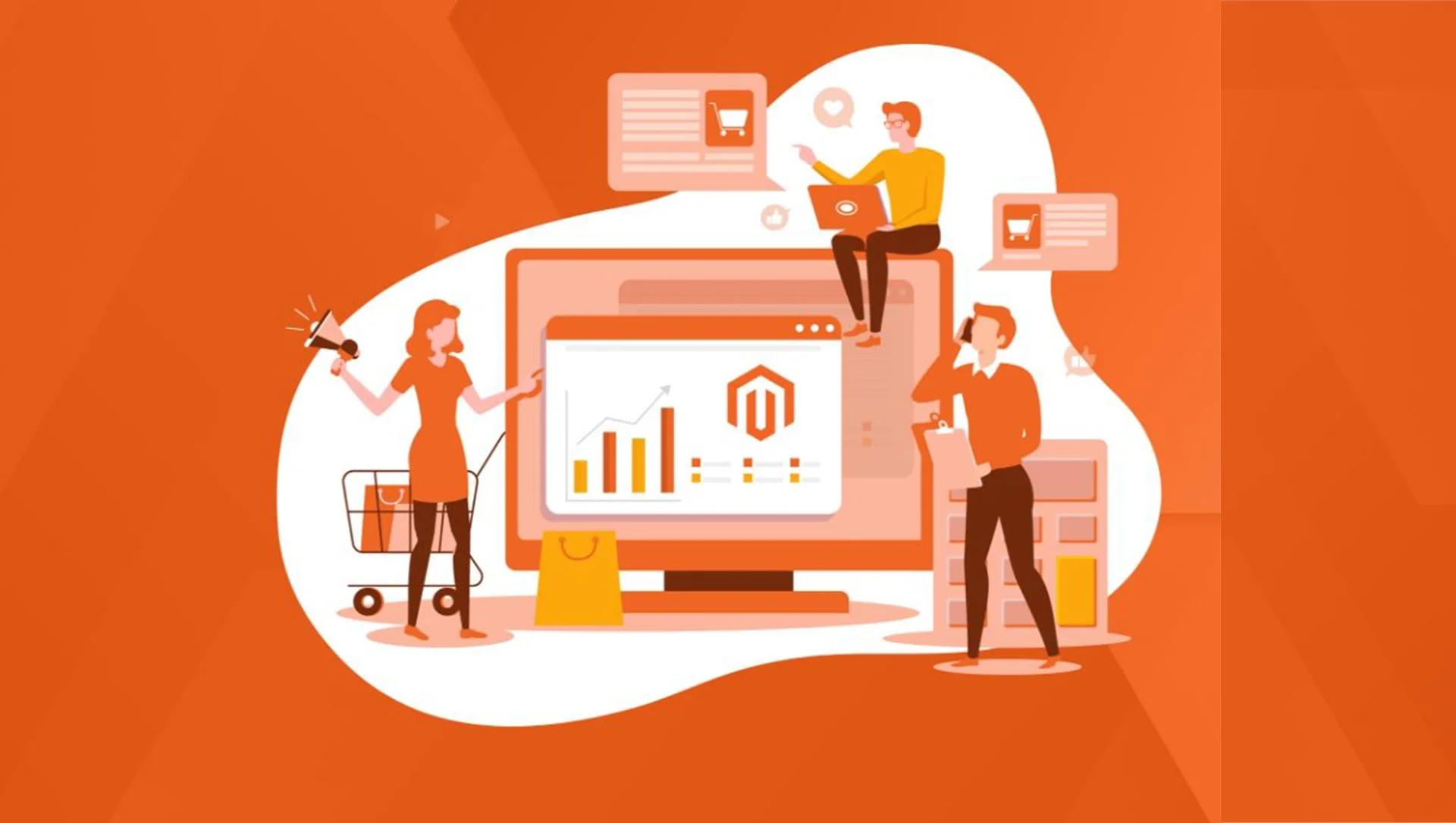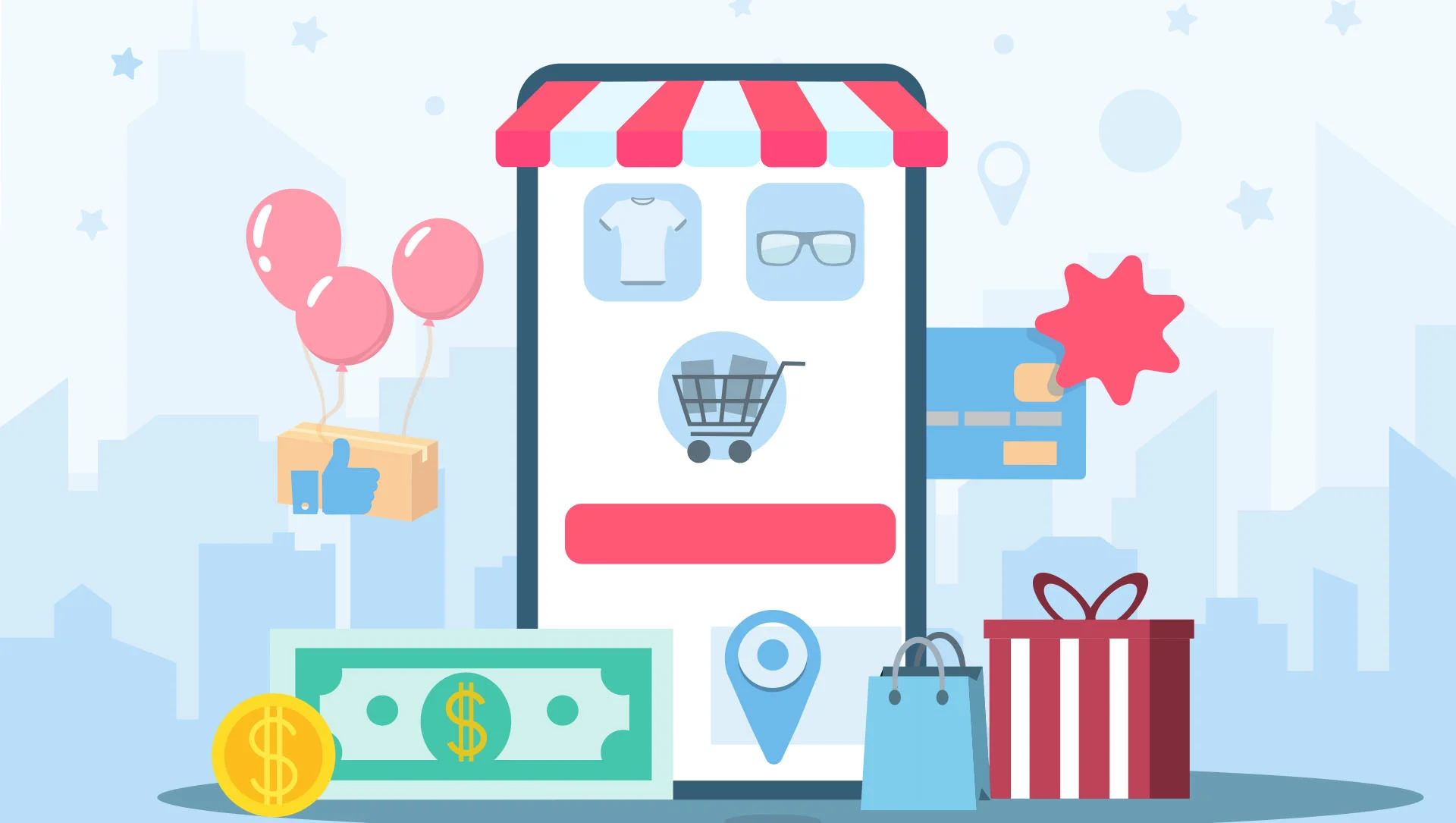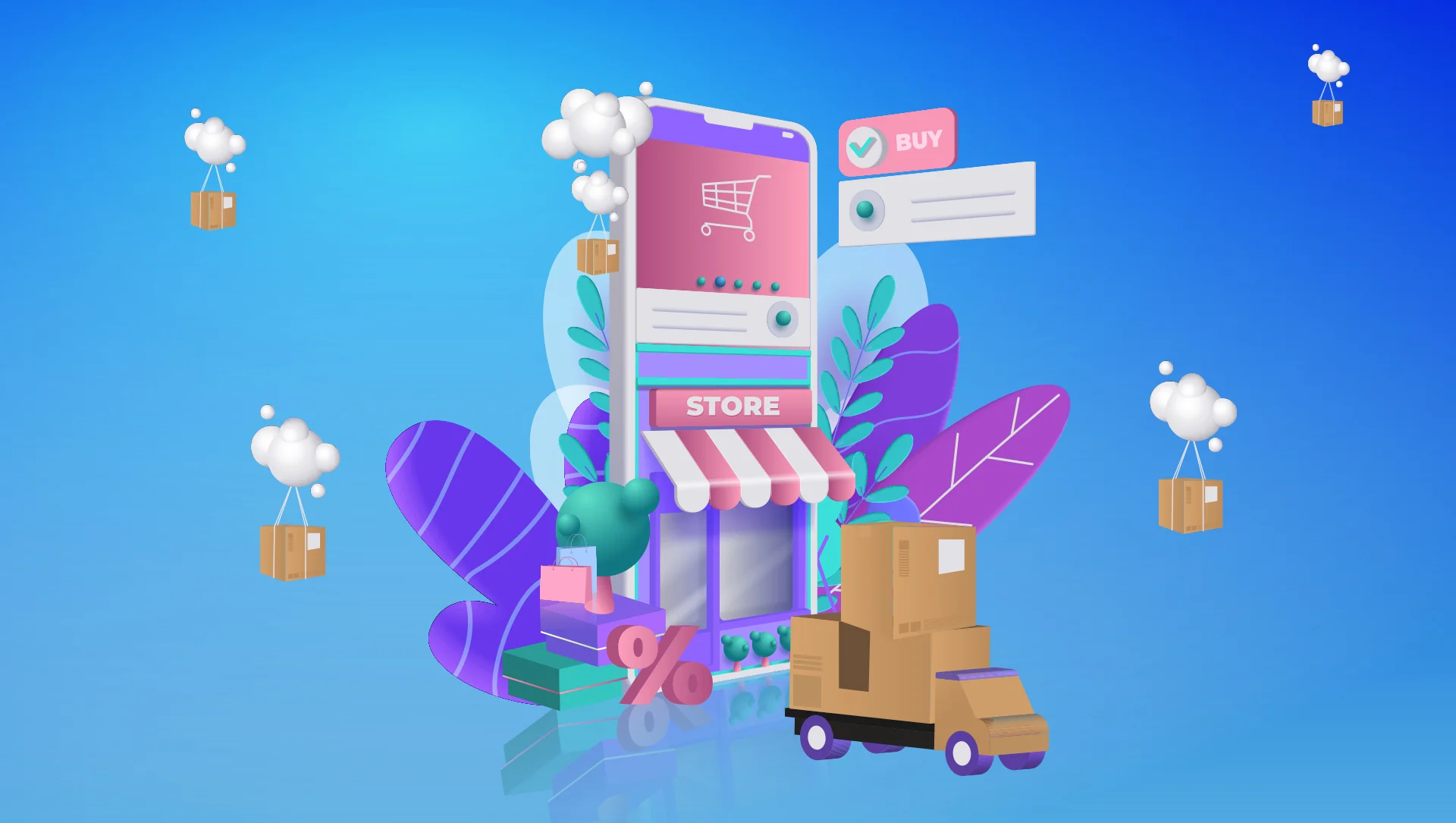M-commerce or mobile commerce refers to the process of buying and selling goods and services through (wireless) handheld devices such as smartphones and tablets. M-commerce can be considered as a form of e-commerce that are meant for users to access online shopping platforms without the use of a desktop computer and mobile commerce development is definitely one of the feathers in our crown as one of the most premium Ecommerce website development company in Bangalore. mCommerce gained its popularity basically in the 1990s. The phrase mobile commerce was coined by Kevin Duffey in 1997 at the launch of the Global Mobile Commerce Forum. The same year Coca-Cola too installed two mobile-phones enabled vending machines in Helsinki, Finland, which were equipped to accept payment via SMS text messages and this all started a new era of mobile commerce.
Types of Mobile Commerce
As a leading website development company in Bangalore, we tried to work on the types of m commerce in this blog. While mCommerce encompasses a wide variety of transactions, the most common and significant types of applications for mobile devices that can all be categorized by function are broadly segregated into one of the following three types:
- Mobile Banking
- Mobile Shopping
- Mobile Payments
But of course, there are more branches to explore. Such as-
1. Mobile Commerce for online shopping
This category is pretty similar to eCommerce but the difference remains in accessibility. This is accessible only via your iPhone or Android. You can shop for anything from anywhere with just a few clicks on your phone. Browse, research, select, compare, shortlist, add to cart and buy – all these are the easy steps that are to be followed with your phone.
2. Mobile Commerce for Banking
You can pay your bills, transfer money to friends or family, and more with just the touch of a button. Use the mobile banking apps to make in-app transactions, including requests to the bank and merchant transactions.
3. Mobile Commerce for Finance
The most important kind of mobile commerce is finance. It includes banks and other financial institutions that want to increase their customer base by providing information about their services on their mobile devices. Banks can also use this opportunity to provide real-time information about their customers, like credit card usage or online transactions. It will help them track fraudulent activities easily and better understand how they should market their products to their customers to increase sales.
4. Mobile Commerce for Payments:
5. Mobile Commerce in Catalogs
These are similar to book clubs where you get free items or products delivered right to your door! They come in all sizes and shapes and flavors. E.g IKEA very recently has come up with a “try before you buy” option that enables their customers to take photographs of their living spaces and decide on an imaginary spot using their AR app. The bottom line of business thus gets boosted which results in an overall improvement in customer satisfaction.
6. Mobile Commerce for Marketing
This one is founded on a simple principle: you put advertisements in front of people, so they see them repeatedly until they finally choose to buy something. You can either send promotional emails, discount codes, and SMSs; also use your app for location-based mobile marketing for easy and convenient branding and visibility.
7. Mobile Commerce for Retail Sector
Retailers can also reap the benefits of this m-commerce technology by sending push notifications to their valued customers when they receive new product shipments or when they are offering in-store sales nearby. Customers can get automated updates on products that they may be interested in buying through push notifications on their devices through a retailer’s app or website. It can be really handy if the retailer has multiple stores around.
8. Mobile Commerce for Healthcare and Medicine Sector
The Healthcare and Medicine sectors have never been so easy and accessible before. You can use apps such as CVS to access and fill out prescriptions as well as facilitate home delivery of medicines. You can schedule your appointments with doctors and routine tests with a few clicks. You could even speak to a doctor online without rushing to the clinic for every minor ailment like mild temperature, runny nose, rashes, UTI, etc.
9. Mobile Commerce for E-Ticketing services and Hotel Reservations
The working generation of today who wants everything at their fingertips takes advantage of this widely. If you wish to get your airline tickets ready for your business conference or a family trip, you wish to take your date out to his/her favorite concert, all of this is possible with just one click of your phone button. There are apps for almost every function today.
10. Mobile Commerce for Entertainment sector
Remember those days when Pokemon Go took over the world of gamers? Well, now it is the turn of augmented reality to take over your entertainment life to new pinnacles. Gamers obviously have a chance to live in their favorite universe and socialize as well with other devoted gamers. Game creators thereby get an opportunity to sell their goods through both in-app purchases and ads.
11. Mobile Commerce for Data- driven Services
You get notified of almost everything happening worldwide in the blink of an eye. You get informed of all the happenings around the world. Today, every news portal has an app – be it financial news, political news, sports figures, or even traffic updates. You have the ability to choose the topics you want to be aware of. The information world has apparently shrunk into the little device you hold in your palm.
12. M-Commerce for Education Sector
Today you have the option to learn anything you wish through specific mobile modules online – live or recorded. I think all of us will agree that our children attended online sessions throughout the pandemic, and also many of them used their handhelds to do so. Educational apps, therefore, evolved in dozens, helping children find additional help they require with complex subjects.
Types of Mobile Payments
Mobile payment has become contemporary and mainstream and most financial institutions have devised various mobile payment methods to join the competition. Customers opt for easy and secure payment methods when they are shopping from a mobile website. Convenience of course takes precedence here.
Myriad Mobile Payment Models
There are some primary models used for mobile payments.
1.Bank-centric Payment Model
The bank-centric payment model depends on the banks as the main point for the payment. The bank needs to regulate and distribute the payment transactions. It includes debit card and credit card payments, and online transactions through mobile bank apps such as bank transfers.
2.Operator-dependent Payment Model
Here, the operator functions as the principal transaction point for the payments for each and every merchant transaction.
3.Collaborative Payment Model
In the Collaborative Payment Model, the mobile operators and financial intermediaries basically collaborate to make payments possible.
4.Independent Service Provider or ISP Model
A third-party operator, here in this model, works as an intermediary between the financial enterprises and mobile carriers. Mobile Wallet Apps such as Google Pay, PayPal etc. come under this category.
Mobile commerce Transaction Mode Types:
1.Mobile or Digital Wallets
Mobile wallets are third-party apps that save your card information and facilitate transactions every time through the phone. Amazon Pay, Apple Pay, Google Pay, etc., are some of the major mobile wallets. It also encompasses person-to-person transactions like Venmo.
2. Debit or Credit Cards
You can always make use of your bank cards saved on mobile apps to make transactions through your bank accounts. It is undoubtedly one of the easiest forms of marketing.
3. Near–Field Communication or NFC
A reader module, in this mode, debits the required amount from a smartcard-equipped mobile device when it is in proximity. The amount is charged to the customer’s mobile banking or prepaid accounts.
4.Quick Response or QR Code Scanning
This might be fairly familiar to you. In shops or restaurants, you might have been requested to scan a QR code by a POS, or use a scanning app to scan the QR code of the merchant establishment to enable the payments. Quick and easy!
5. SMS Authentication
Most traditional models still prefer to use SMSs as authentication tools to continue transactions with debit or credit cards. The expansion of the ubiquity of the SMS channel to do transactions like ticketing or subscription renewals of Netflix, Spotify, etc., and in-app purchases.
6.Sound Signal-based Payment mode
Options here are much similar to that of data voice-over, NFC 2.0, or near sound data transfer (NSDT) etc. Here, audio signals will be generated that the mobile microphones can pick to trigger efficient online transactions.
7. Magnetic Secure Transmissions or MSTs
In this case, you mainly equip your smartphone to emit a magnetic signal specific to one produced by a magnetic credit card while swiping it through a credit card terminal. Therefore, there is absolutely no need to carry any umpteen cards with you!
8.WAP Billing
This mode basically functions on billing directly through mobile network operators. Direct operator billing can be considered as another term for this payment mode. The payment ultimately gets added to your mobile operator bills.
Thus, you can pay for items or products using various payment credit cards or debit cards by linking it up with your personal bank accounts through your phone. Paying for stuff with accounts such as PayPal, Apple Pay, or Google Pay saves you the hassles of every time carrying a wallet, or visiting an ATM, or even fearing losing your cash, or your valuable credit, or debit card.…the list of advantages just goes on!
Thrilling M-Commerce Stats to Check Out
- M-commerce market size is expected to expand up to $3.6 billion by the end of 2021.
- Approximately 89% of grocery shoppers prefer to use their mobile devices while visiting physical stores.
- Mobile devices accounted for 68% of paid search click share in Q2 2021 in the US.
- In 2020, mobile commerce revenue reached $339 billion in the US.
- About 80% of users have done window shopping using their mobile devices online within the last six months.
- Mobile commerce sales are predicted to boost up to $432.2 billion by 2022.
- More than 51% of users use mobile web apps to other shopping channels. According to them, web apps are convenient and have a consistent UI.
- Voice m-commerce sales are expected to increase upto $40 billion by 2022.
Be vigilant of the newest M-commerce Trends with IndGlobal!
Mobile commerce growth shows all signs of growth in 2022. Thus, it is crucial to equip your business as per customer needs. Whether you need to enhance your app with a smart assistant or wish to build altogether a more sophisticated PWA, we are here to help!
With our Ecommerce web development company in Bangalore, it is much easier to build scalable and recognizable m-commerce solutions and also ensure that your users enjoy more secure and convenient online transactions through one-click ordering, voice shopping, and intelligent chatbots.
Scale Your Business up With Indglobal!
Reach out to us for high-quality premium software development services, and our software experts will assist you to develop a relevant software solution to outpace your competitors.
Challenges with Mobile Commerce Developing a proper mobile shopping experience for your customers has specific challenges that need addressing.
1. Security Measures
Anything that goes online always has its security risks. Bank account breaches, password hacking, data leaks, stolen mobiles, and several other factors must be considered while implementing mobile payment modes. Preventive measures and authentications should always be in place before you initiate transacting through mobiles.
2. Associated Conditions
Poor connectivity, improper or reduced signals, or any other external factors can decide if the customer is able to make a payment or not—the place where the customers hail from plays a critical role in the shopping experience.
3. Reduced Screen size on Mobiles
Sometimes the small screens on mobiles have lower resolution, and the products might not look attractive. Therefore, they can hinder the expected outcome by not displaying the products/ services well, and the customer might end up abandoning the cart.
4. Reduced Shopping Options
Listing obsolete products, that too using a slower platform, etc., could act as significant factors that can take away from customer delight.
5. Issues with Payment
If the payment process in the mobile Commerce apps and websites is not updated, it is laborious, and also it lacks multiple payment options, you cannot expect a customer to have faith while making payments through your app or site.
6. Faulty or slow Mobile Devices
Working with a slow, faulty mobile device would stop a customer from thinking about shopping on the phone. They would instead try to reach out to a faster laptop or desktop. An outdated, slow, or faulty mobile may disrupt a smooth mobile shopping experience. And of course, not everyone can afford to have a sleek, contemporary mobile phone.
7. Mobile Apps and Responsive Websites
If your online store lacks mobile apps or beautiful as well as responsive web designs, the customers will never stay on. Nobody prefers to shop at a slow-loading site these days.
8. Geographic Constraints
There are locations that often lack some payment options and digital wallets. Whereas some other areas do not support mobile payments yet. The geographic location constraints thereby will reflect on the purchase behavior of the customers through m-commerce.
9. Enhanced Buying Experience
Streamlining the buying process is obvious when it comes to getting the customers to make purchases. If the sites or apps are not updated, there is no faster way to go ahead with an enhanced buying process.
10. Tax Laws and Cross-country Regulations
Complying with the tax and regulation laws of every country that you might ship to could be challenging. Therefore, you might need to limit purchases and shipping only within your country of origin.
11. Efficient Shipping Mechanism
Even though you might have a perfect website, you cannot deliver your goods on time unless you have an efficient shipping mechanism. Your business and hard work would just go down the drain if you operated in places with a dearth of efficient shipping companies.
Facing issues integrating mobile commerce into your business?
Differences Between eCommerce and mCommerce Concepts
Though both are financial transactions that happen over the internet, there are some hallmark differences that set eCommerce and mCommerce apart.
Page Speed Optimization
Page load speed is just like the Holy Grail to keep your customers on the page. If your site is too slow to load, the customer will never prefer to stay. Mobile sites always load slower than their desktop counterparts, i.e.,10.3 seconds on desktop as compared to 27.3 seconds on mobile making them approximately 87.84% slower! The only way out of this is to optimize mobile page speed to obtain maximum load speed.
Some tips to keeping your pages loading faster are listed below.
- Select the best Content Management Systems like Squarespace and Weebly for your mobile platform in contrast to the slow-loading Wix and WordPress
- Use a CDN and thereby reduce HTML requests to boost up TTFB on mobile.
- Maintain an optimal total page size to provide the best Visually Complete load times.
- Use RightJS and Gatsby JavaScript to increase page speed for small and large pages containing mobile websites.
- Very low or very high compression time often helps with performance.
- Reduce any third-party script to increase the load time.
- Use responsive images as well as image compression to get the best load speed.
- Enabling browser caching would also speed up your website.
- Disabling unused add-ons on your website is a must do to increase the load speed.
- Ensure that your site is running on the latest PHP version
- Keep your store up and running on the latest MySQL version to maintain double the load speed as the previous version.
Integrate mobile commerce today to enhance your online business! Talk to our Experts!
Wrapping Up – Mobile Commerce Opportunities
Even though machines and robots are going to rule the world in the near future, mobile commerce also promises to be a massive area of growth! With mobile commerce evolving at a rapid rate, it could probably be wise to adapt to the changes the future may hold for mobile commerce and ecommerce in general.
As shoppers continue to look for convenience, mcommerce needs to meet customer expectations in a much more efficient, engaging way. MCommerce Development or Mobile commerce development services, and Mobile Commerce App Development services are something you can definitely adopt to succeed in the future. If you are thinking of taking your ecommerce business to the next level and increasing sales by reaching new potential customers, contact us today to build your customized mobile apps!
Next Post ←
Mobile Commerce: Establishing Newest Trends in 2022
RELATED ARTICLES
Request a quote or Talk to an expert
We guarantee a response in 6 hours or less. And the best bang for your buck.























